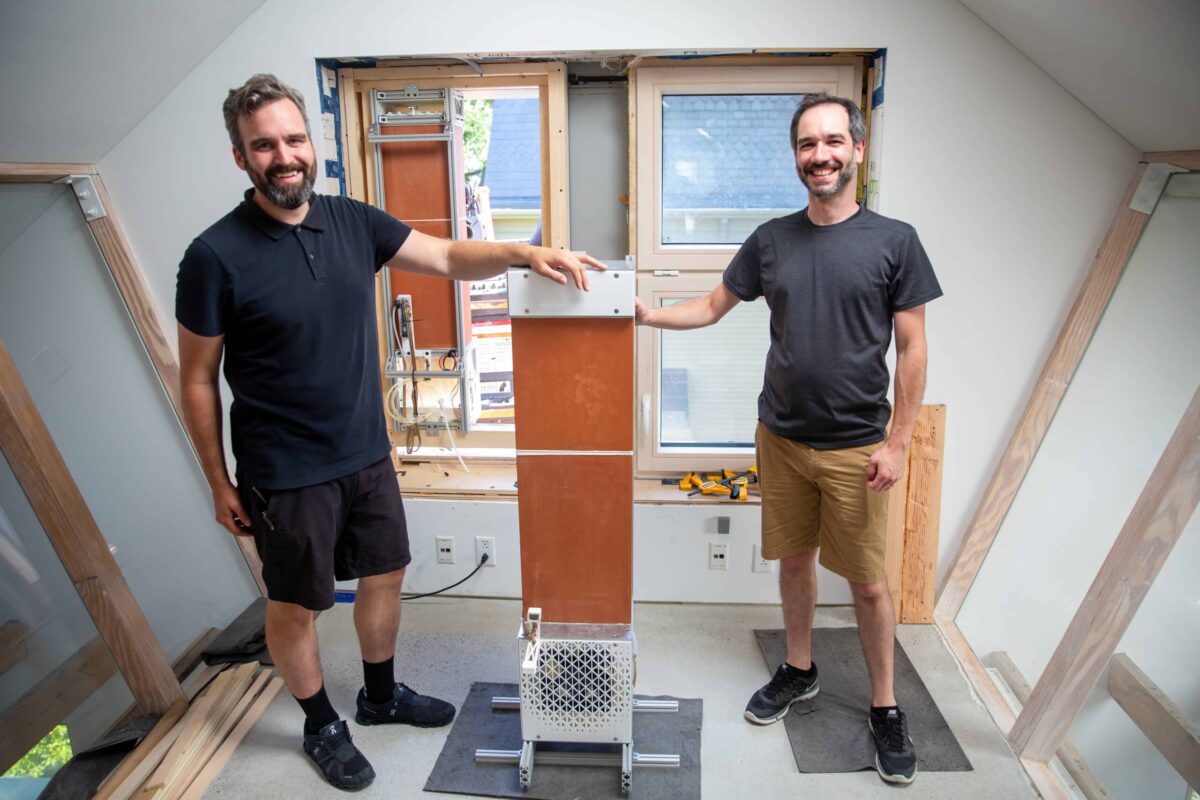Continuing a trend from this summer, September 2023 was the hottest September on record, according to scientists at NASA’s Goddard Institute for Space Studies. As climate change increases global temperatures, world cooling demands are expected to triple by 2050. While globally accessible and cheap to manufacture, conventional air conditioners still rely on wasteful mechanical vapor-compression methods and dated technology to cool and dehumidify air, making them one of the largest consumers of energy in industrialized countries. In response to these inefficient products and rising temperatures, an interdisciplinary team from Harvard is developing Vesma, a refrigerant-free, eco-friendly cooling solution suitable for all climates. In late August, their durable, low-cost, low-energy system was installed and tested in real-world conditions at HouseZero, headquarters for the Harvard Center for Green Buildings and Cities (CGBC).
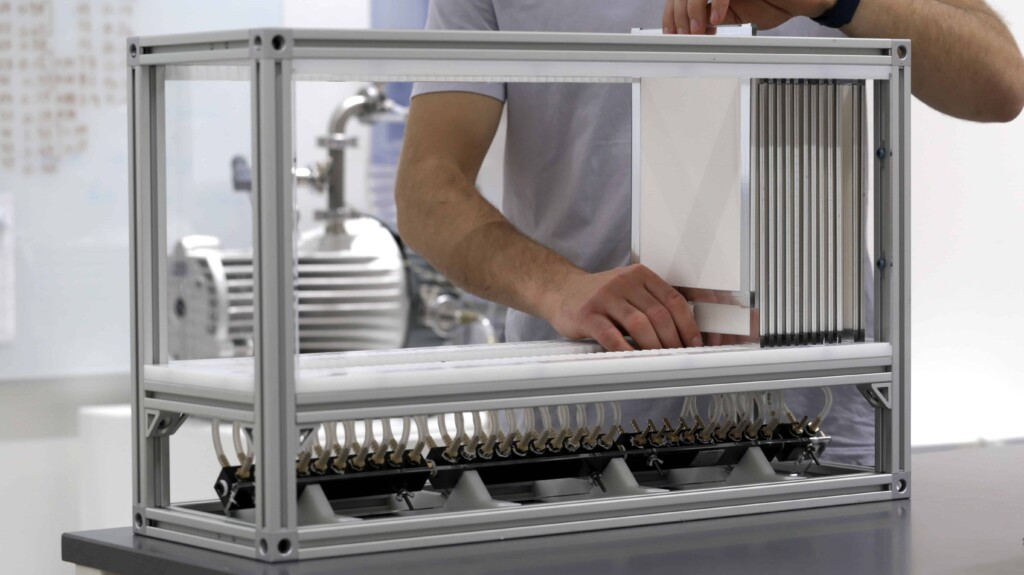
Vesma combines two innovative systems with imposing names: cold Superhydrophobic Nano-Architecture Process (cSNAP) and vacuum membrane dehumidification, often called “DryScreen.” By using just water, this advanced evaporative cooling technology can pre-treat and dehumidify the input air, further maximizing its cooling capability and allowing it to be used in a wide variety of climate zones around the world. A version of the DryScreen prototype will be installed at Druker Design Gallery as part of the exhibition Our Artificial Nature: Design Research for an Era of Environmental Change, on display from November 13 to December 21, 2023.
Early testing showed that Vesma effectively cooled indoor air in extremely hot conditions and could one day replace traditional vapor-compression coolers with a much more sustainable option. Jonathan Grinham, Assistant Professor of Architecture at the Harvard Graduate School of Design (GSD), is one of the team leads working on Vesma. Grinham shared some test results with Joshua Machat, assistant director, communications and public affairs, at the GSD.
An interdisciplinary team from the Harvard John A. Paulson School of Engineering and Sciences (SEAS), Wyss Institute, and the GSD are behind the Vesma project. Could you explain the importance of this collaborative process?
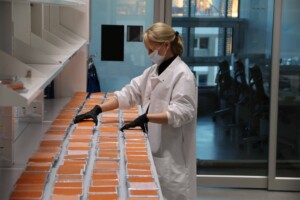
The built environment and anthropogenic climate change are a deep causal loop. Designers need to untangle complex systems to re-think or even unlearn much of what we do, especially concerning a century-old way of conditioning interior environments. How we do this requires expertise across many fields. The GSD, Wyss, and SEAS faculty have cultivated a collaborative environment over the last decade or more. It has also had many different phases. Much of our early success came from translating problems. We found many interesting new technologies in the sciences looking for applications— solutions without the right problem. For example, the nanoscale barrier layer coating that allows indirect evaporative cooling in cSNAP was initially commercialized for waterproofing, anti-fouling, and other surface treatments. Not cooling. Or, in the case of the membranes for vacuum dehumidification, the engineering team built up expertise in making smart membranes for filtration; we simply asked if it could work for dehumidification. Spoiler: it doesn’t. But the expertise was on hand to quickly pivot to materials that were becoming more readily available and better suited for water capture. Today, the collaboration is in a different phase. Team members have a much better understanding of each other’s working methods and the value of collaborating. There’s far less of a “take and translate” mentality and more “yes and”: each side is better anticipating how this critical work benefits from other points of view.
The recent Vesma prototype was installed for two weeks in late August at HouseZero. Have you been able to conduct any early analysis from the collected data?
The team is thrilled with our early results. The field study goal was to prove we could effectively deliver refrigerant-free cooling in any climate using our novel vacuum membrane dehumidification and indirect evaporative cooling technology. We showed that the combined technologies, now named Vesma, can provide comfortable cooling more effectively than a typical vapor compression air conditioner. One way of proving this is by looking at the ratio of thermal energy removed to the electrical energy input or the coefficient of performance (COP). Vesma’s COP is above that of a typical air condition (COP > 4) and, under certain conditions, much, much higher. However, with any optimal system, we have to ask where things are less optimal. Vesma’s breakthrough is cooling using only water. The next big question was how much water the system uses for evaporative cooling. Throughout the study, we show that during certain conditions, the dehumidification system captures more water out of the incoming air than is used for cooling it. This is radical. However, on hot, dry days, we may only capture around 25 percent of the water we use for cooling. Finally, Vesma has a few ways of providing a thermally healthy environment. We can sensibly cool, we can dehumidify, and we can control the fresh air supply. We tested a half-dozen configurations to show we have several design degrees of freedom when providing a regenerative and effective cooling system. We’re excited to dive deeper into the data and see how to optimize for more human-centric cooling.
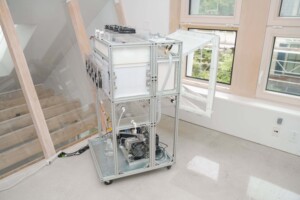
Is it possible for Vesma technology to be integrated into existing evaporative coolers in a cost-effective manner, especially with more industrialized systems?
This is somewhat a question of “market fit.” Our experience is that the building industry is a tough market to fit. Choose your “they” in the industry, but “they” have been doing things the same way for quite a while and making incremental improvements along the way. Vesma, and a few other companies we admire are disrupting the building cooling industry. We could integrate it into the existing system, but there is little appetite for it, especially when 50 percent of the market revenues are service contracts. Instead, we are targeting a cooling design that is a new or retrofit package for light commercial buildings (think replacing roof or wall units, not necessarily the mechanical penthouse). And not using refrigerants makes us even more disruptive. When it comes to market fit, it means we don’t have to sell through typical refrigerant-certified installers. Theoretically, any plumber, contractor, or handy owner can install Vesma because you just need to add water.
The water repellency of duck feathers is an inspiring phenomenon in nature that effectively insulates and cools various waterfowl. Can you explain the connection of down feathers and Vesma?
When we think about “new” materials, we think about a tiny fraction of society’s material history. The reality is that nature has evolved more beautiful and effective materials than we could ever design. For example, evaporative cooling is one of society’s first air conditioning methods used by “ancient” Egyptians and Persians. It’s a refined form of sweating, the same process that helps humans and other animals cool themselves through the phase change of water. In the case of duck feathers, whether contour or down, inspiration comes from the unique microstructures that enhance the bulk material’s performance. The contour feathers on the outside of the bird have a microstructure that locks the feather’s barbs together. This, combined with the duck’s own oils, which are worked into the feathers, creates waterproofing. In the case of cSNAP, we self-assemble a layer of alumina nanostructures on the ceramic and then functionalize them with an alkyl-group (oil-like compound) to make areas of the heat exchanger super hydrophobic and water-rejected. At the same time, other areas of the ceramic remain porous and hold the right amount of water for evaporation. Together, these dry and wet areas allow for powerful indirect evaporative cooling.
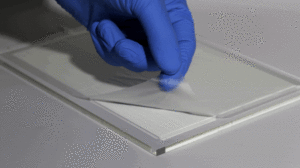
On the other hand, down feathers use small structures at the correct scale to trap air and create an insulating (and buoyant) layer. We think about the correct scale but do the opposite for both cSNAP and DryScreen. We design every feature in the system with tools like computational fluid dynamics to enhance heat and mass transfer. Effectively, we are trying to find geometry that promotes heat or vapor diffusion while limiting the energy needed to flow air across it, fitting form to flow. Typically, this means we are designing hierarchical structures with large surface areas—something closer to an elephant’s ears or a toucan’s beak.
Early refrigerants such as chlorofluorocarbon (CFC) have been phased out for environmental reasons and hydrofluorocarbons (HFC) have their own problems. It might be several years until a product like Vesma is on the market. In the meantime, what advice do you have for consumers who are seeking an environmentally friendly cooling unit?
Today’s HFCs have massive global warming potential (around 2000 times a single molecule of CO2). These chemicals typically leak before, during, and after an air condition system’s lifetime. The data are staggering. Societies’ global use of cooling (all cooling, not just buildings) has the potential to release many years’ worth of anthropocentric emissions by 2050; some say at least 60 Gtons of CO2e. For this reason, the Kigali Amendment outlines the gradual phase-out of HFC. This will likely happen with natural or organic refrigerants that have all been patented by the same slow-moving “they” mentioned above. Society found a good reason to phase out CFC, skin cancer. We are hopeful we can do it again with HFC. In the meantime, heat pumps using improved refrigerants are a good place to start. However, it can be more complex. As we rightfully push for more electrification, we must back it up with a larger and cleaner energy grid.
What is the greatest technological hurdle as this project advances and seeks project support and investment?
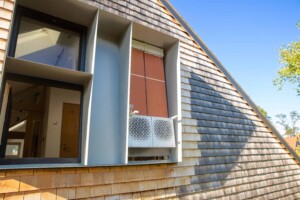
It’s exciting to say we know where most of our hurdles are. While we are in the very early productization phase, our collaborative team has driven Vesma’s discovery to an advanced level of development. The cSNAP indirect evaporative cooling unit was prototyped using industrial ceramic manufacturing with partners Gres Aragon in Spain. We have scaled up the barrier layer from a few square centimeters to many square meters (when you start designing something at the nanoscale, that’s more than ten orders of magnitude!). The bio-based polymers used in DryScreen have been tested and sourced with the industry. For the most part, the next phase of Vesma’s technical development will optimize the system-side design and integrate thermal controls (AI anyone). On the system side, we can certainly improve the vacuum pump; we expect three- to four-fold COP improvements using ready-to-ship pumps. On the thermal controls side, we are excited to distill enhanced thermal performance and optimal energy design into a single degree of freedom, simply asking the user, “Are you comfortable?”
